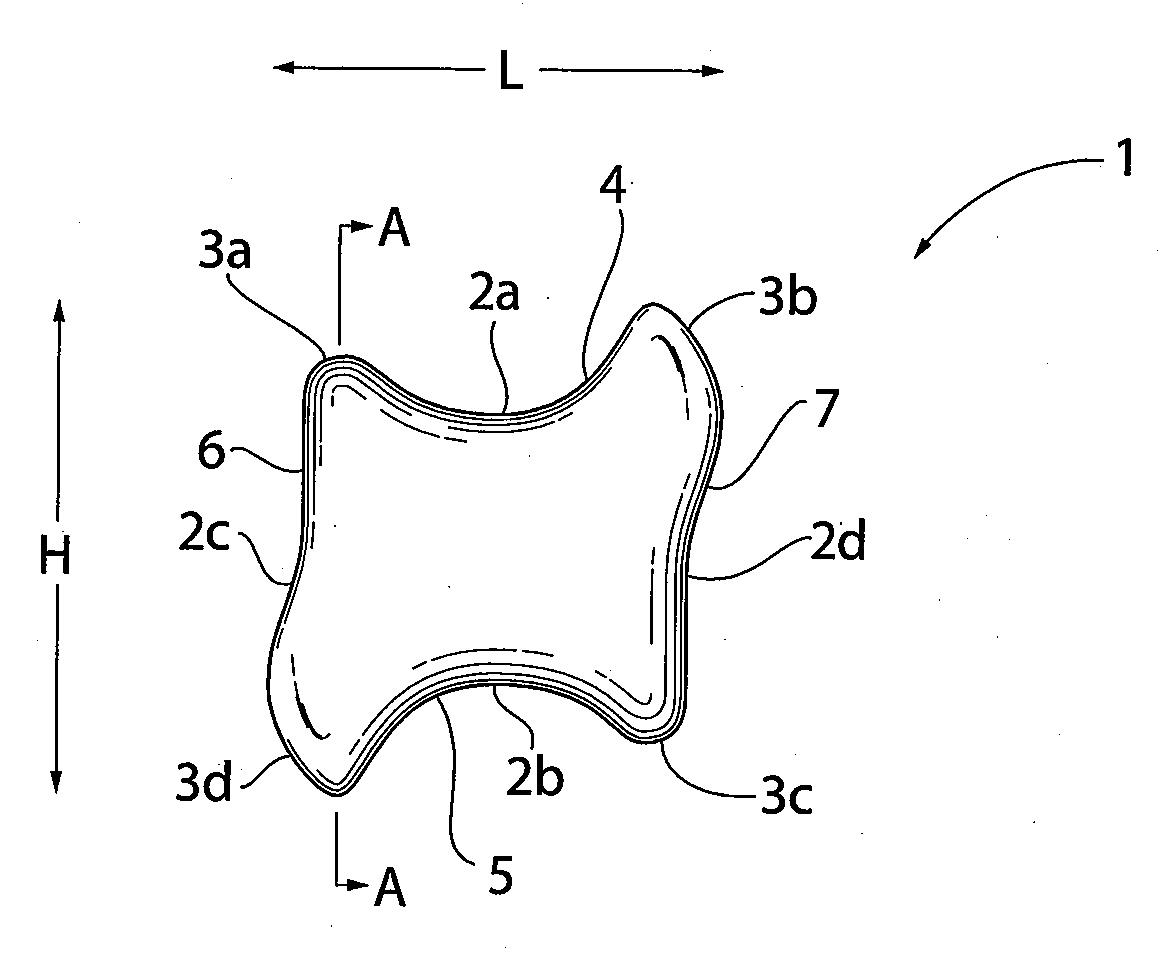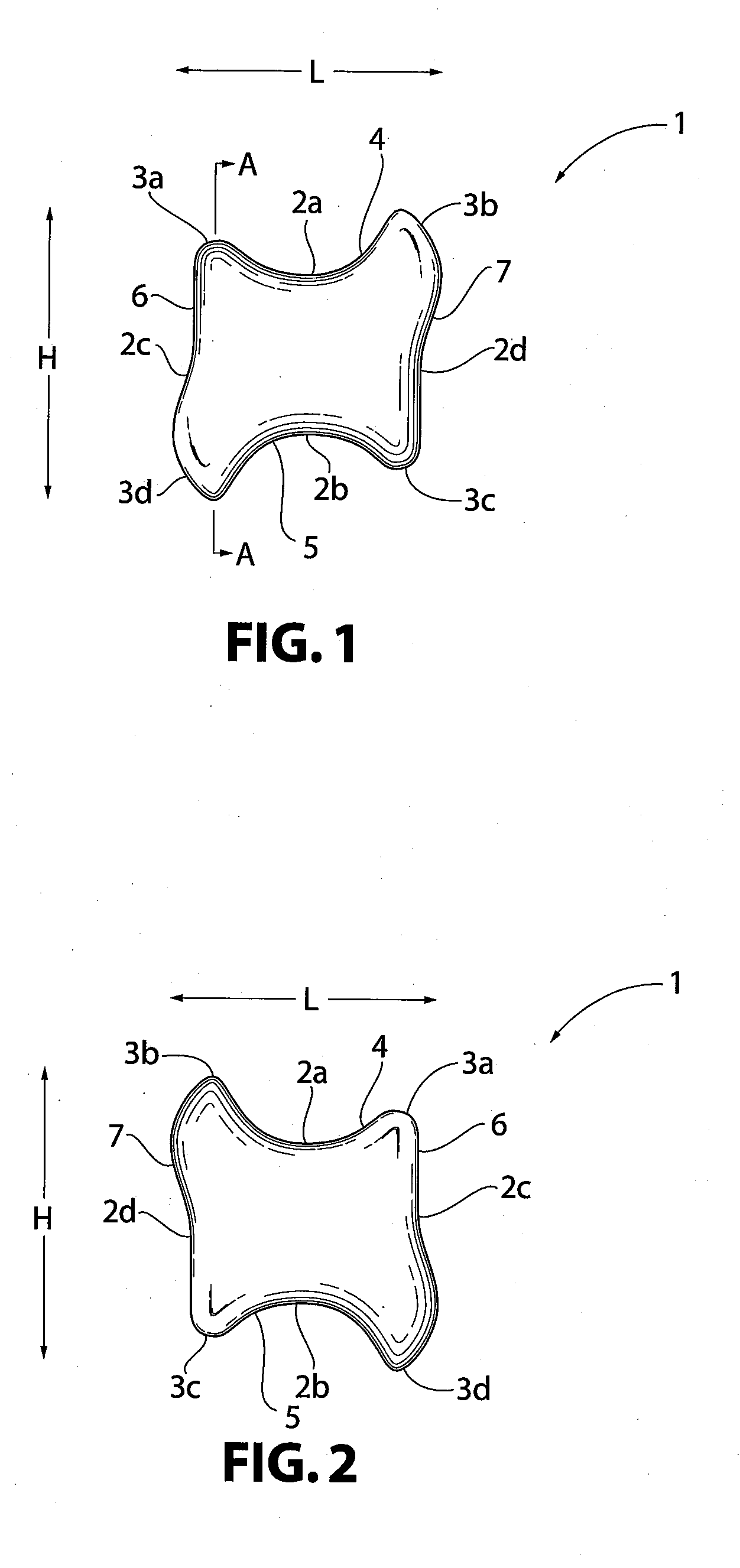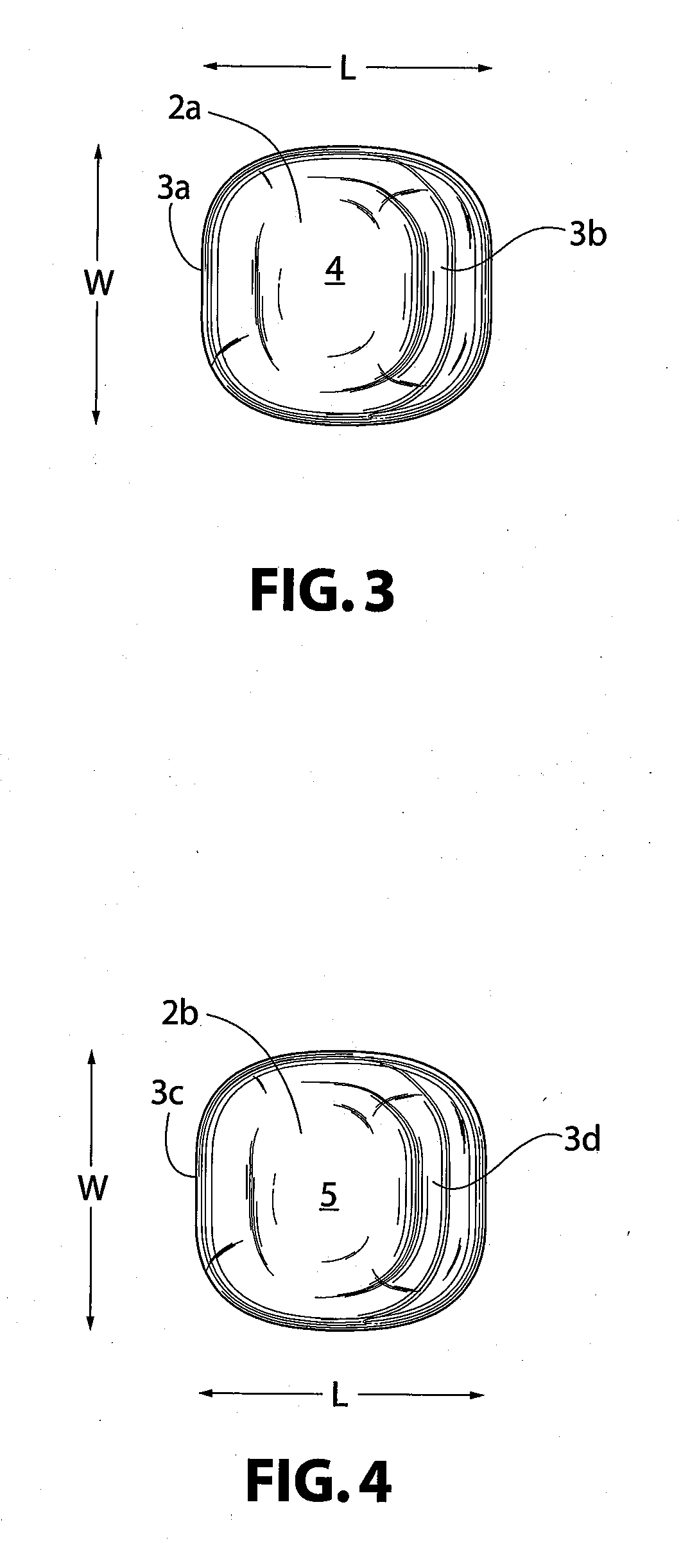Therapeutically Countoured, Compliance Encouraging Aligner Implement
a technology of aligner and counted, applied in the field of therapeutics, can solve the problems of loss of tracking, recapture of alignment, loss of tracking, etc., and achieve the effects of improving patient comfort, improving treatment duration, and reducing pain
- Summary
- Abstract
- Description
- Claims
- Application Information
AI Technical Summary
Benefits of technology
Problems solved by technology
Method used
Image
Examples
first embodiment
[0032]Referring now to FIGS. 1-7, implement 1 is shown. Implement 1 is preferably a one-piece construction having a length dimension L, a height dimension H, and a width dimension W. The ratio of the length dimension L to the height dimension H can be 1:1 or near 1:1, in which case implement 1 has a generally square cross-section taken along line A-A of FIG. 1. Implement 1 also includes a plurality of concave channels 2a-d extending across the width dimension W, and preferably across the entire width dimension W. Channels 2a-d are generally provided in sets of two with each channel 2a-d in the set disposed on an opposite side of implement 1 from the other channel 2a-d of the set such that each channel 2a-d in the set can be used to engage with either the top or bottom teeth of a patient, as described further herein. For example, implement 1 can include a top channel 2a disposed on a top surface 4 of implement 1 and extending across the width dimension W and a bottom channel 2b dispo...
second embodiment
[0037]Referring now to FIG. 8, the implement 101 is seen to have a generally elongate, smoothly curvatured, form including a top channel 102 across its length L. In this overhead view, it is seen that top channel 102 is not in the middle of the width W of the implement 101, but is structured between a lip side 109 and a tongue side 110 which has more mass than the lip side 109. The implement 101 of this embodiment is otherwise generally symmetrical in that there is another channel, not seen, parallel to top channel 102 on the underside. Thus the view from the underside is substantially identical to FIG. 8. However, it should be understood that top channel 102 need not be exactly over the opposite channel, but rather could be slightly offset but still generally parallel while still preserving the mass relationship of the lip side 109 and tongue side 110—that is, the tongue side is larger. The generally elongate form of implement 101 may be said to have an axis through its length L, a...
PUM
 Login to View More
Login to View More Abstract
Description
Claims
Application Information
 Login to View More
Login to View More - R&D
- Intellectual Property
- Life Sciences
- Materials
- Tech Scout
- Unparalleled Data Quality
- Higher Quality Content
- 60% Fewer Hallucinations
Browse by: Latest US Patents, China's latest patents, Technical Efficacy Thesaurus, Application Domain, Technology Topic, Popular Technical Reports.
© 2025 PatSnap. All rights reserved.Legal|Privacy policy|Modern Slavery Act Transparency Statement|Sitemap|About US| Contact US: help@patsnap.com



